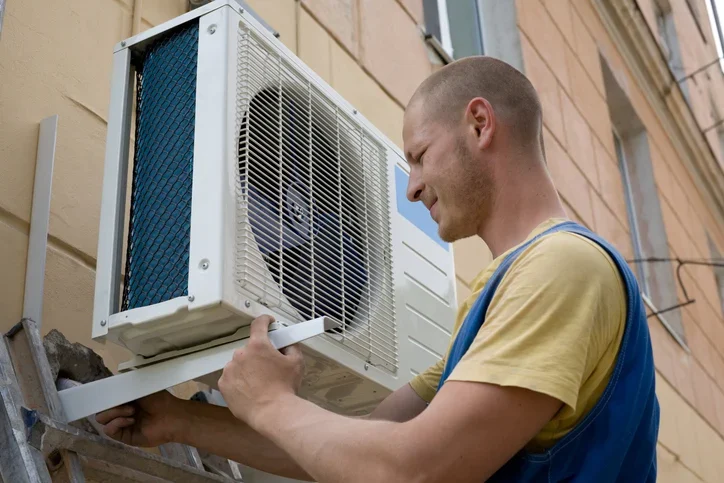

In order to maintain good relationships with suppliers, ensure high levels of customer service and increase profit margins, an HVAC contractor must be data-driven. Using data to develop and measure the following three key performance indicators (KPIs) can help you build a stronger HVAC business and enable better supplier management:
Before we proceed, it is important to recognize that digitizing procurement processes is essential for an HVAC contractor to successfully implement and track these and other KPIs. Without technology enablers, procurement is labor-intensive and inefficient, especially for small and medium-sized HVAC contractors with limited procurement resources. Raiven (formerly Qmerit) has the answers!
By signing on to Raiven Marketplace and our industry-first buying consortium with Avendra, you can save between 7-25% on supply purchases by using our universe of precontracted, prequalified suppliers! To get an idea of the potential magnitude of benefits, the global HVAC market is expected to reach $347 billion by 2030.
Raiven Marketplace is a cloud-based one-stop shopping platform for your buyers. The simplicity of use makes compliance easier, providing “guardrails” to steer your buyers away from nonapproved suppliers and back to approved ones (thus reducing rogue spending).
When measuring your competitive pricing KPI, remember: The price may look good today, but what has been the supplier’s historical pattern of price increases? Without a database to track metrics, you are flying blind.
Raiven Marketplace allows you to track supplier price performance over time. Knowing this, you can avoid one-shot wins in favor of long-term price stability in your deals. Supplier price stability then gives you job pricing confidence.
You can also add preferred suppliers if and when your internal capabilities ramp up. In addition, you can track supplier price, on-time delivery accuracy and other performance metrics over time.
New revenue sources are also possible by negotiating purchase rebates and aggregating contract volume. Negotiate with contractors to use your preferred suppliers, thus increasing your rebate revenue.
Suppliers are better armed with much more information than you about products, services, costs and performance. Raiven Marketplace closes this knowledge gap by putting it in your hands. Armed with robust data, an HVAC contractor has greater leverage with suppliers going forward on price and service.
Other benefits include:
Beyond the direct unit price, what other costs are included? Be on the lookout for hidden costs, and find the total price.
For example, freight can vary widely based on distances from the supplier’s distribution center, but suppliers with centers closest to your site should have lower transportation costs. Trucking costs may include fuel price escalators, and the supplier could include handling or allocated distribution costs and fees.
With all the indirect costs, be sure to gain full transparency in your bid processes and results.
Delivery errors (incorrect part number, wrong quality grade, etc.) cost time, money and customer complaints. Raiven Marketplace mitigates these issues and provides a means of tracking them for supplier management.
Late delivery can cause delays, cost project time and lead to customer complaints. Getting supplies on time helps you prevent over- or under-stock issues, improves the efficiency of each job, and helps you maintain high levels of customer satisfaction. The best way to achieve this is to track DIFOT (delivery in full, on time), lead times on orders and fulfillment accuracy.
DIFOT is the industry standard metric for supplier delivery performance. It is defined as follows:
DIFOT = (number of deliveries on time, in full) / (total number of deliveries)
For the purposes of this calculation, “in full” means correct in all aspects – the right quantity of the right part, to the right place, at the contracted time.
For example, Supplier A makes 100 deliveries. Of that 100, 80 are on time and in full. 20 are later than the contracted date. The DIFOT score would be 80/100, so 80% of that supplier’s deliveries were DIFOT.
This is an important metric to evaluate a supplier’s supply chain performance as well as your own.
Late deliveries can potentially lead to completion penalties. Storage costs can pile up, eating away profitability. Labor and supervision costs can also rise.
Be sure to consider deliveries that are earlier than the contracted date too. They can result in storage costs and wasted labor.
For these reasons, you should build DIFOT metrics into your supplier contracts, and at a minimum, require the supplier to track their DIFOT performance. It should also be a key topic of review in supplier evaluations. In fact, you can set up contract incentives for good performance and penalties for poor performance.
For instance, a supplier with good DIFOT may be eligible for more business. Suppliers with poor DIFOT may be subject to financial penalties or loss of business.
Additionally, you should require your suppliers to provide an adequate explanation of the cause for non-DIFOT deliveries. Be careful not to accept the reason at face value though.
A commonly overused excuse is Force majeure, meaning delays beyond the supplier’s control. Challenge this excuse. Force majeure should be clearly defined in the contract with the supplier.
Tracking current and historical pricing informs your procurement activities and enables you to evaluate their performance. When issues occur, you will have the data to understand and address the cause. You can reward suppliers for keeping price increases down while electing not to work with suppliers with unsatisfactory price performance.
Determining and tracking indirect costs allows you to negotiate with suppliers and address cost change drivers over time. It incentivizes suppliers to optimize indirect costs to keep and grow your business. They know you are watching.
Furthermore, tracking and measuring DIFOT performance illuminates your suppliers’ current and historical performance on delivery. Because time is money, it is a crucial topic of conversation with your suppliers.
At the end of the day, developing and tracking these three KPIs will provide an HVAC contractor with a holistic approach to better supplier management. Enabled by Raiven’s technology, these KPIs are the basis for regular supplier conversations about contractual requirements, continuous improvement and, ultimately, more profit for the HVAC contractor.
To learn more about how Raiven can help, contact us today.

